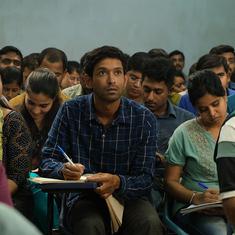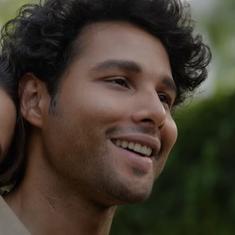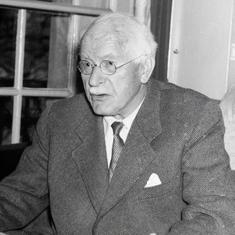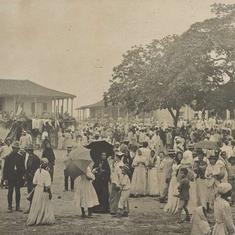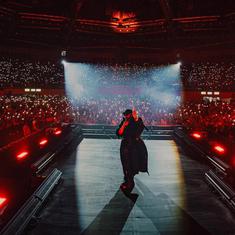On April 9, Farooq Ahmad Dar was tied to the front of an army jeep and paraded through villages in central Kashmir’s Budgam district. A placard was strapped to his chest, and a voice on a loudspeaker warned that all stone pelters would meet the same fate. Dar denied that he was a stone pelter. He said he had gone to cast his vote in the Srinagar Lok Sabha bye-polls held that day. The army picked him up after that, he claimed.
Days later, footage of the incident went viral on social and mainstream media as the “human shield video”. The state police filed a first information report against the army major involved. The army itself set up a court of inquiry to investigate the incident.
The police investigation is still under way, and even though the court of inquiry has not yet published its verdict, reports claim that Leetul Gogoi, the officer being investigated, has been exonerated. Yet on Monday evening, news broke that Chief of Army Staff Bipin Rawat had handed out a commendation letter to Gogoi.
What does this mean for the army, its record on human rights, its image in Kashmir? Scroll.in spoke to several retired generals about this.
‘For doing your job well’
What kind of honour is the commendation letter given to Gogoi in the first place? “It is an award given by the army chief, and does not require approval of the government of India,” said Ata Hasnain, who has served as the commander of the Army Corps in Jammu and Kashmir. “The army chief, at any time, can take cognisance of an act of courage or distinguished service. He will then forward the commendation to the military secretary, who will publish it. It is an award given for doing your job well.”
The commendation card, former generals say, is not a highly ranked military honour. Almost every retiring army chief gives his cook and other personal staff such a card.
“A commendation card is the lowest award,” said a former general who did not wish to be identified. “If you think this it was such a great action that he had done, this is an insult to him. This was the most publicised action of the Indian army. Why not give him a gallantry award? This is more of a facade, to keep in tune with the jingoistic mood of the nation rather than to recognise him for military action.”
This officer also raised questions about the timing of the award. “The court of inquiry report has not been finalised, the J&K police investigation, which could have done a fair probe, has been scuttled,” he said. “The army has taken pre-emptive action.” It was in response to the political clamour around Gogoi, he added – take, for example, the tweets posted by the Congress’s Amarinder Singh, asking that the major be honoured for his actions.
Hasnain did not question the timing. “The only prerequisite is that the officer or jawan must not be under a discipline and vigilance ban,” he said. “To the best of my knowledge there was no such ban on the officer. The inquiry is over. It has not, ipso facto, established any guilt. The army chief would be aware of that.”
NC Vij, chief of army staff from 2003 to 2005, commended Rawat. “I must compliment the army chief for the award, to make sure that young officers do not feel discouraged to do their duty,” he said.
A rights violation?
India is party to the Geneva Conventions of 1949, which says:
“The following acts are and shall remain prohibited at any time and in any place whatsoever with respect to [persons taking no active part in the hostilities] … (b) the taking of hostages; (c) outrages upon personal dignity, in particular humiliating and degrading treatment.”
Despite this, opinions are divided on whether the act of tying up a civilian and using him as a human shield was a human rights violation.
“The circumstances are a matter of debate,” said the general who spoke off the record. “But irrespective of what they were, the actions of the officer are against the IPC [Indian Penal Code] and customary international law. We are signatory to various conventions. The army’s own rules and regulations do not say you can violate these laws.”
A particular situation may have compelled the officer to act a certain way, but that did not exonerate him, this officer felt. “Even if you commit an unintentional murder, you are charged with manslaughter,” he noted. “It does not take away the wrong that has been done. What about people you have punished for violations in the past? What about the licence you are giving for the future?”
But for other generals, Gogoi’s actions were moderate and necessary. “You have to understand the difficult conditions under which the Indian Army operates,” said Vij. “The uppermost concerns are the security of their men, absence of collateral damage and to do one’s duty. The officer did not want to punish him. He did what he did to prevent loss of life.”
The move was not part of army practice or part of standard operating procedures followed by the army, but the young major took a risk and thought of a solution to control a stonepelting mob without resorting to fire, Vij felt. He dismissed reports which said there had been no mob at the time.
“He was the wrong man in the wrong place,” admitted Hasnain. “But he was not hurt. No one hit him or ill-treated him. He was just used as a screen. The ITBP [Indo-Tibetan Border Police] personnel at the spot had sent out an SOS for help. What was the officer supposed to do?”
Human rights and the army
According to the generals, the army is sensitive to human rights concerns. In the past, they say, it has prosecuted at least 100 personnel guilty of rights abuses. If the human shield incident had not been publicised and the army had come to know of it in time, action would have been taken against the officer, says one general.
Vij says the army has always been acutely aware of human rights, even when it conducted operations in Manipur and Nagaland in the 1960s. But others see the idea of human rights as a relatively recent arrival for the armed forces.
“Till 1989, the word ‘human rights’ was not heard,” said Hasnain. “Even in the early part of the conflict in Kashmir, it was not heard. But once it came to the fore the Army adopted itself in a very formal way to the issue. These ideas about human rights were thrown up after the end of the Cold War.”
After 1993-’94, the army set up its own human rights cells at every command and corp, the army trained its personnel on human rights, and the increased media scrutiny meant the armed forces were careful at all times, Hasnain explained.
In 2010, officers of the 4 Rajputana Rifles took three local youth to the Line of Control in Kashmir’s Machil sector, shot them and passed them off as Pakistani militants. Five years later, an army court awarded life sentences to six soldiers involved in the incident.
The award to Gogoi undoes the precedent set by Machil, said the general who spoke off record, it made one aberration look like standard army policy. It also gave the impression that whatever the army did was right, that it enjoyed impunity. It would empower officers to act on their own, without following the rulebook. In such a situation, he felt, the massacres that Kashmir saw in the early 1990s would not be far away.
No more WHAM?
“Does the Geneva Convention give anybody the right to throw stones at somebody else, to risk the lives of others?” demanded Vij. “Haven’t we seen this for the last 25 years? Those who are saying this [that Gogoi’s actions amounted to a violation of human rights] are out of touch with reality.”
For about two decades now, the army in Kashmir has spoken of the winning hearts and minds (WHAM) doctrine. In 1997, the Sadbhavana drive, a goodwill programme, was launched by the army. Other military tactics which caused suffering to ordinary civilians were also phased out.
Hasnain mentions large-scale cordon and search operations where entire villages were sealed off, residents were to line up outside and the army conducted door to door searches. In later years, these operations had been scaled down, only specific houses were targeted rather than entire villages.
Does the award to Gogoi and the return of large-scale cordon and search operations signal a hardening of the army stance in Kashmir once more? The crackdown operations were more a symbolic show of domination, Hasnain felt, not the gruelling searches carried out in the 1990s. Today’s operations were aimed at signalling to militants that they could not move around freely.
But the security situation in the Kashmir Valley may have taken its toll on the army’s image for now. “Winning hearts and minds is not an absolutist thing,” said Hasnain. “It goes hand in hand with hard operations. In such hybrid conflict situations, it is win one day, lose another day.”

